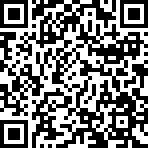 |
Editorial
COVID-19 pandemic and teledermatology in low-income regions
1 Private practice, Cairo, Egypt
Address correspondence to:
M. Badawy Abdel-Naser
Bawabet Al Hayah Medical Center, 95 A, Ahmed Orabi Street, Al Mohandeseen, Cairo,
Egypt
Message to Corresponding Author
Article ID: 100004D02MA2021
Access full text article on other devices

Access PDF of article on other devices

How to cite this article
Abdel-Naser MB. COVID-19 pandemic and teledermatology in low-income regions. Edorium J Dermatol 2021;3:100004D02MA2021.ABSTRACT
No Abstract
Keywords: COVID-19 pandemic, Skin manifestations, Teledermatology
Editorial
The COVID-19 pandemic overwhelmed the hospitals and patients’ access to health care facilities is limited. Telemedicine including teledermatology emerged as practical tool in providing medical services for mild cases. Teledermatology in low-income countries is not well organized and is realized on an individualized basis. Patients provide history and photos of their skin lesions and the dermatologist delivers the possible diagnoses and the best possible triage. Expectedly and unavoidably in low-income countries (regions), the provided photos are of poor quality which is challenging. Nevertheless, it is a good opportunity for the dermatologists to get acquainted with this poor quality photos and to make the correct diagnosis so long as the specific and characteristic features of a particular dermatosis are clear.
The COVID-19 was first reported in Wuhan, China in December 2019. Soon later, it spread to other Chinese cities and the whole world. In March 2020, the World Health Organization declared it as a global pandemic. The causative microorganism is SARS-CoV-2 which belongs to the human coronaviruses which comprise several strains that infect the upper respiratory tract and result in mild flu-like symptoms. Coronaviruses in general consist of single-stranded RNA covered by lipoprotein envelope through which spike protein emerges on the surface. The spike protein attaches to the receptor angiotensin converting enzyme-2 which is heavily expressed on alveolar cells, and to a variable extent in the heart, kidney, enterocytes and endothelium. Three strains, namely SARS-CoV, MERS-CoV, and SARSCoV-2 caused outbreaks of severe respiratory symptoms with higher mortality rates. The current pandemic, caused by SARS-CoV-2, compelled several countries in the world to implement preventive measures, such as lockdowns, mask mandate, and social distancing to curtail community spread. With the introduction of effective vaccines, the number of infected cases and deaths sharply declined, which prompted several countries to ease the preventive measures. Unfortunately, huge gatherings (also called superspreader events), including over 50 million person per event, in the context of religious festivities and election campaigns facilitated mutations and the emergence of variants, such as the Delta variant which is more contagious and more lethal. The number of infected individuals and deaths spiked particularly among unvaccinated populations and in regions with low vaccination rates due to the Delta variant of SARS-CoV-2. Several countries reimposed the preventive measures which have negative impact on the global economy and public health. The viral infection and the associated preventive measures resulted in several diseases that affected almost all body systems including the skin [1],[2]. Telemedicine including teledermatology emerged in the COVID-19 pandemic as practical tool in providing medical help and advice while securing the required social distancing, evading the lockdown, minimizing the spread of infection and relieving the overwhelmed and inundated hospitals [3],[4]. The main concern was the poor quality of photos provided by patients; nevertheless this poor quality provides a good opportunity for dermatologists to have additional experience to deal with them. So far, teledermatology is practical and successful approach as shown in the following COVID-19 confirmed cases. Patients provided the history and the relevant photos via WhatsApp.
Skin diseases caused by COVID-19 pandemic can be categorized into:
I. Skin diseases related to SARS-CoV-2 infection and its variant(s)
An observational study reported the cutaneous manifestations in the following order, maculopapular (38.5%), vasculitis (13.5%), urticarial (11.5%), alopecia (11.5%), vesicular (9.6%), erythema multiforme (7.7%), and chilblain-like lesions (7.7%). Several studies showed similar results in addition to livedo and necrosis, seen mostly in severe hospitalized cases. Other miscellaneous manifestations include herpes simples, herpes zoster, and pityriasis rosea-like lesions [5],[6],[7].
Maculopapular and vesicular rashes were uncommonly encountered, perhaps being mistaken by the patients as heat (sweat) rash, a common condition in hot and humid geographical areas. It is likely that they are commonly seen in moderate and severe hospitalized cases (Figure 1A). They are usually generalized and slightly itchy or asymptomatic. If they appear late during COVID-19, they are usually associated with good prognosis (Figure 1B and Figure 1C). In contrast, acute urticaria is a relatively common presentation of mild COVID-19 (Figure 2A). It may be associated with few symptoms, such as rhinorrhea, brain fog, and insomnia or mild symptoms, such as mild fever, headache, diarrhea, and sore throat. The cutaneous lesions of acute urticaria-associated COVID-19 did not show specific features but it was a constant finding that urticarial lesions were remarkably very prominent and extensive particularly on the palms and soles which were also the last to resolve (Figure 2B). None of the patients required hospitalization which denotes that acute urticaria may carry a good prognosis. Unlike severe hospitalized cases, differential leukocyte count reveals normal lymphocyte number or lymphocytosis rather than lymphopenia. It is likely that lymphocytosis carries a good prognosis as no case progressed to moderate or severe condition. The urticarial lesions responded favorably to systemic (oral) non-sedating antihistamines usually in 2–3 weeks.
Similarly, vasculitis lesions were not commonly encountered which may be due to being commonly seen in severe cases that required hospitalization. Moreover, alopecia and erythema multiforme are mostly observed in hospitalized cases. However, chilblains (pernio)-like lesions were seen in mildly symptomatic cases (Figure 3A). In almost all of these cases, there were fatigue, loss of smell and taste sensation, mild fever (38–39°C), and sore throat but no cough or difficulty in breathing. Some cases also showed vesicular lesions on the extremities (Figure 3B), scalp (Figure 3C), and to a lesser extent on the trunk. The patients responded well to a combination of vitamin C (500 mg every 8 hours), nifedipine (30 mg twice daily), and pentoxifylline (400 mg every 8 hours) for 10 days.
Herpes simplex (Figure 4A and Figure 4B) and herpes zoster were also manifestations of COVID-19 but it is not known whether they are directly related to SARS-CoV-2 or due to the associated fever and compromised immune response. They were treated by local antiseptics. On the other hand, pityriasis rosea-like lesions are uncommonly reported, are less in number, and show evident lesional and perilesional erythema (inflammation). The patient responded favorably to twice-daily application of mild topical steroids (Figure 5).
II. Skin diseases related to the implemented preventive measures
With the strict implementation of the aforementioned preventive measures, additional mental and psychological illnesses emerged, and stress and anxiety-related psychosomatic diseases surged; anorexia nervosa and bulimia nervosa are two examples. Apart from the nutritional deficiencies that are associated with these conditions, e.g., phrynoderma (Vitamin A deficiency) and scurvy (Vitamin C deficiency), several skin disorders, such as telogen effluvium, xeroderma, generalized pruritus, hyperhidrosis, and hyperpigmentation, may also occur. Furthermore, stress can trigger or worsen preexisting dermatoses, e.g., acne, alopecia areata, rosacea, atopic dermatitis, psoriasis, seborrheic dermatitis, vitiligo (Figure 6) and chronic urticaria [8],[9],[10],[11]. Irritant contact dermatitis from disinfectants and face masks was repeatedly observed. Allergic contact dermatitis from face masks and other protective equipment are uncommon [5],[6],[7],[12]. All these cases do not represent a difficulty in the diagnosis even with low quality photos so long as the diagnostic and specific features are clearly seen.
CONCLUSION
In conclusion, teledermatology is a valuable tool in triaging skin diseases of mild COVID-19 during the strict preventive measures even in regions where the infrastructure of telecommunications in general and professional photography in particular is poor.
REFERENCES
1.
Tsai SC, Lu CC, Bau DT, et al. Approaches towards fighting the COVID?19 pandemic (Review). Int J Mol Med 2021;47(1):3–22. [CrossRef]
[Pubmed]

2.
Herlihy R, Bamberg W, Burakoff A, et al. Rapid increase in circulation of the SARS-CoV-2 B.1.617.2 (Delta) variant – Mesa County, Colorado, April–June 2021. MMWR Morb Mortal Wkly Rep 2021;70(32):1084–7. [CrossRef]
[Pubmed]

3.
Lukas H, Xu C, Yu Y, Gao W. Emerging telemedicine tools for remote COVID-19 diagnosis, monitoring, and management. ACS Nano 2020;14(12):16180–93. [CrossRef]
[Pubmed]

4.
Villani A, Scalvenzi M, Fabbrocini G. Teledermatology: A useful tool to fight COVID-19. J Dermatolog Treat 2020;31(4):325. [CrossRef]
[Pubmed]

5.
Recalcati S, Gianotti R, Fantini F. COVID-19: The experience from Italy. Clin Dermatol 2021;39(1):12–22. [CrossRef]
[Pubmed]

6.
Galván Casas C, Català A, Carretero Hernández G, et al. Classification of the cutaneous manifestations of COVID-19: A rapid prospective nationwide consensus study in Spain with 375 cases. Br J Dermatol 2020;183(1):71–7. [CrossRef]
[Pubmed]

7.
Wollina U, Karadağ AS, Rowland-Payne C, Chiriac A, Lotti T. Cutaneous signs in COVID-19 patients: A review. Dermatol Ther 2020;33(5):e13549. [CrossRef]
[Pubmed]

8.
Serafini G, Parmigiani B, Amerio A, Aguglia A, Sher L, Amore M. The psychological impact of COVID-19 on the mental health in the general population. QJM 2020;113(8):531–7. [CrossRef]
[Pubmed]

9.
Jafferany M, Franca K. Psychodermatology: Basics concepts. Acta Derm Venereol 2016;96(217):35–7. [CrossRef]
[Pubmed]

10.
Chiriac AE, Wollina U, Azoicai D. Flare-up of rosacea due to face mask in healthcare workers during COVID-19. Maedica (Bucur) 2020;15(3):416–7.
[Pubmed]

11.
Abdel Naser MB, Wollina U, El Okby M, El Shiemy S. Psoralen plus ultraviolet A irradiation-induced lentigines arising in vitiligo: Involvement of vitiliginous and normal appearing skin. Clin Exp Dermatol 2004;29(4):380–2. [CrossRef]
[Pubmed]

12.
Park SR, Han J, Yeon YM, Kang NY, Kim E. Effect of face mask on skin characteristics changes during the COVID-19 pandemic. Skin Res Technol 2021;27(4):554–9. [CrossRef]
[Pubmed]

SUPPORTING INFORMATION
Author Contributions
M. Badawy Abdel-Naser - Conception of the work, Design of the work, Acquisition of data, Analysis of data, Drafting the work, Revising the work critically for important intellectual content, Final approval of the version to be published, Agree to be accountable for all aspects of the work in ensuring that questions related to the accuracy or integrity of any part of the work are appropriately investigated and resolved.
Guaranter of SubmissionThe corresponding author is the guarantor of submission.
Source of SupportNone
Consent StatementNo written consent is obtained. The photos were electronically obtained and the identity of the patients is not revealed.
Data AvailabilityAll relevant data are within the paper and its Supporting Information files.
Conflict of InterestAuthor declares no conflict of interest.
Copyright© 2021 M. Badawy Abdel-Naser. This article is distributed under the terms of Creative Commons Attribution License which permits unrestricted use, distribution and reproduction in any medium provided the original author(s) and original publisher are properly credited. Please see the copyright policy on the journal website for more information.









